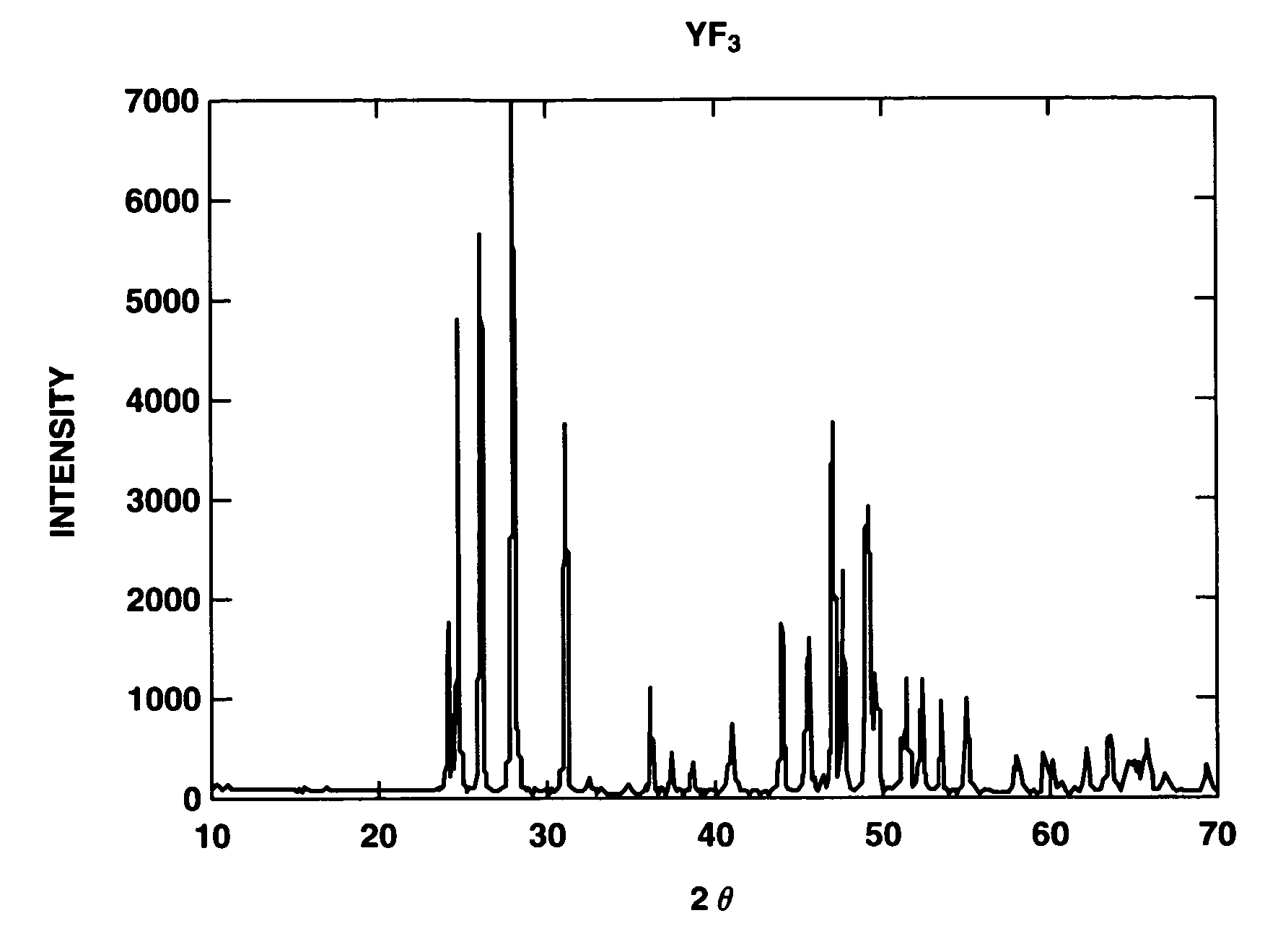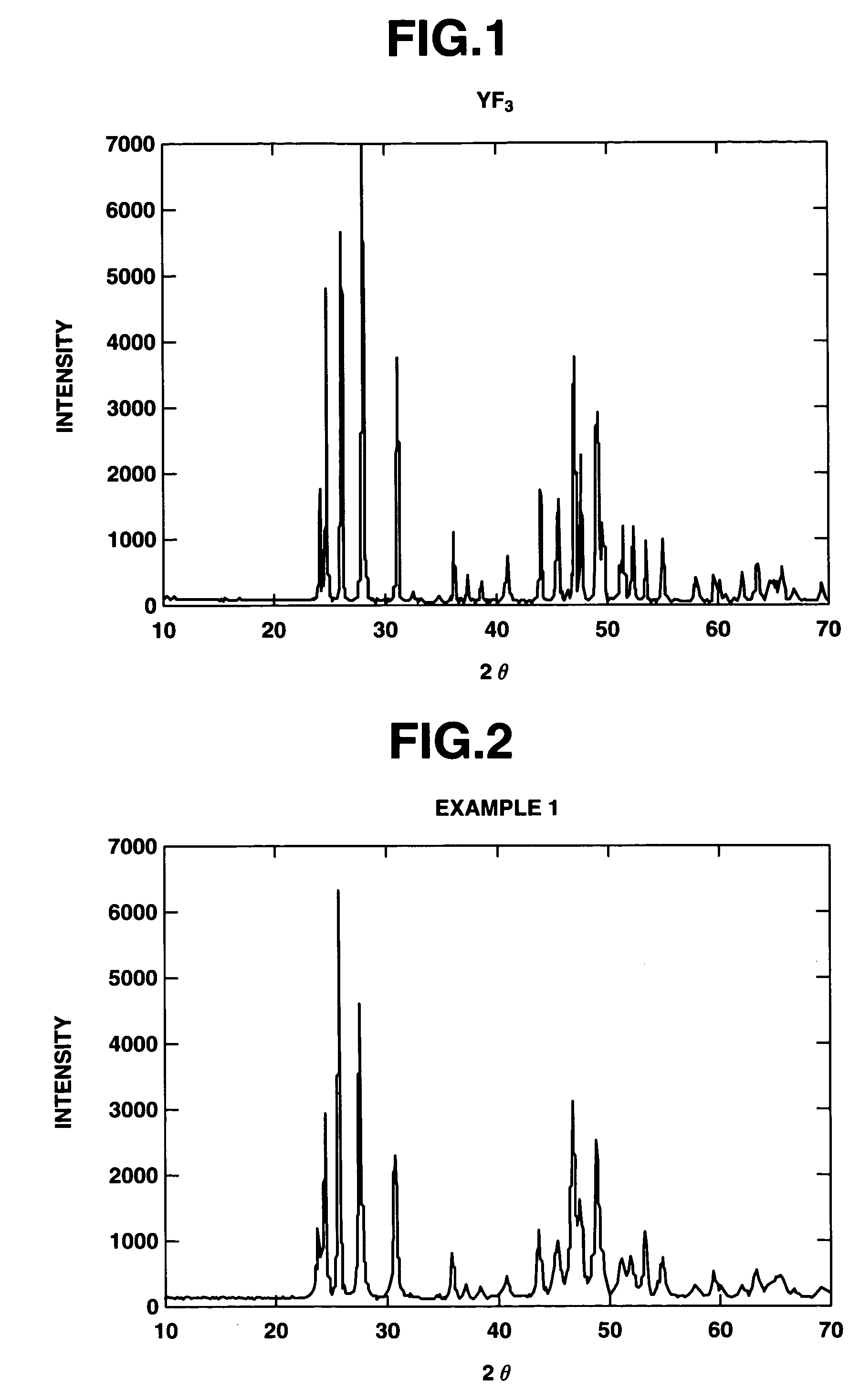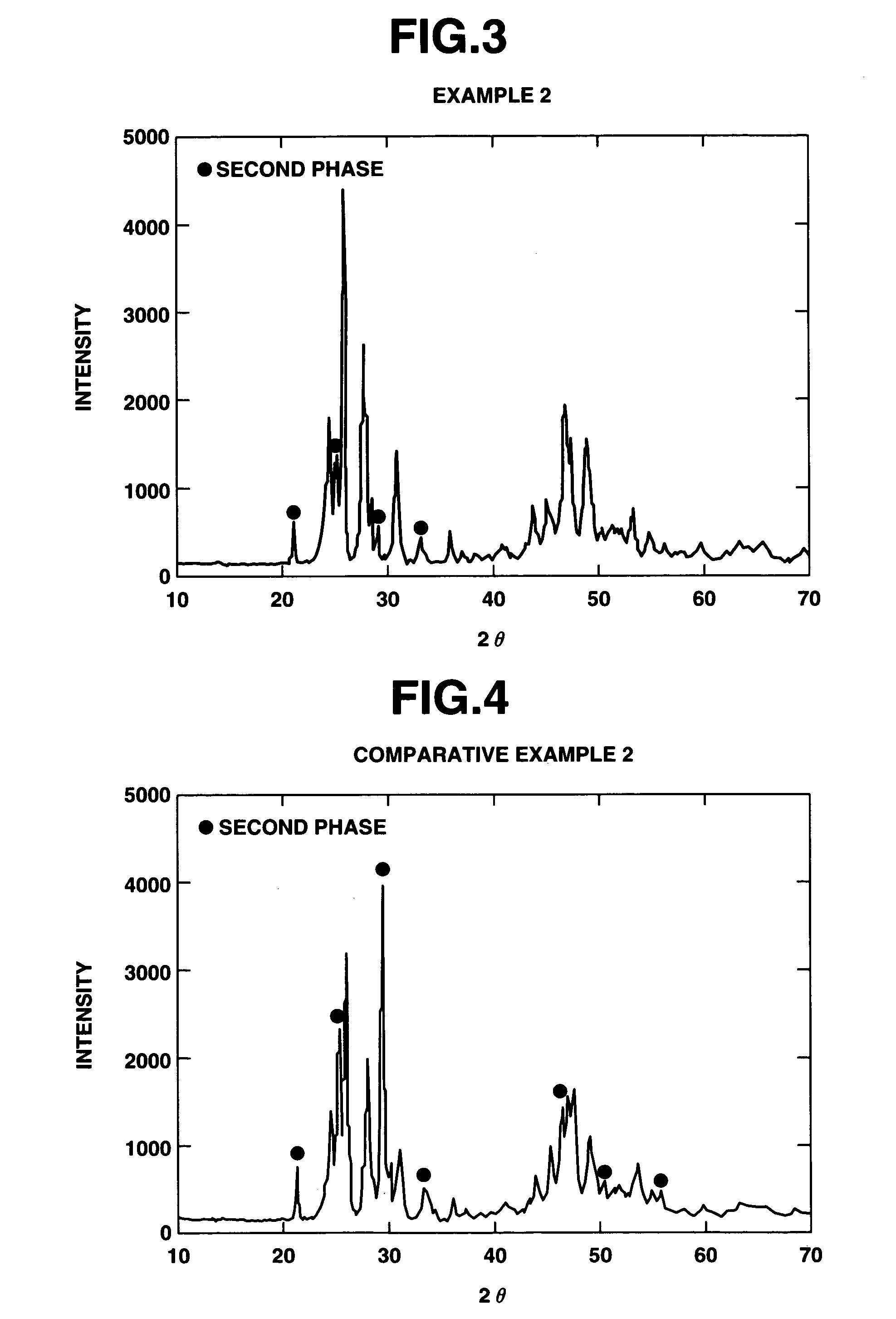Fluoride-containing coating and coated member
a fluoride-containing coating and coating technology, applied in the field of fluoride-containing coatings and coated members, can solve the problems of yttrium fluoride coating loss by corrosion, achieve high purity, reduce the introduction of impurity metal ions, and achieve the effect of effective production of crystalline phase-containing coatings
- Summary
- Abstract
- Description
- Claims
- Application Information
AI Technical Summary
Benefits of technology
Problems solved by technology
Method used
Image
Examples
example 1
[0098]There was furnished an aluminum alloy substrate of 20 mm square. The surface was degreased with acetone and roughened with abrasives of corundum. By operating an atmospheric plasma spraying apparatus at an output of 40 kW and a spray distance of 100 mm while feeding argon gas as a plasma-forming gas, crystalline YF3 powder was sprayed at a rate of 30 μm / pass until a thickness of 300 μm was reached. Prior to the spraying, the substrate was roasted with the plasma gas and thereby heated to 250° C. whereupon deposition was started. FIG. 1 is an x-ray diffraction diagram of the crystalline YF3 powder used herein. It is evident from FIG. 1 that the feed material is highly crystalline YF3 of single phase.
[0099]The surface of the coating was analyzed by an x-ray diffractometer, with the results shown in FIG. 2.
[0100]As a result of qualitative analysis, the coating was identified to be a single phase coating of JCPDS Card No. 32-1431, the profile having the crystalline structure of YF...
example 2
[0104]A coating was deposited under similar conditions to Example 1. Prior to the spraying, the substrate was heated to 80° C. The results of x-ray diffractometry on the coating surface are shown in FIG. 3. The coating contained orthorhombic YF3 of JCPDS Card No. 32-1431, the diffraction profile of YF3, and a second phase having peaks at angles 2θ of approximately 21.1, 25.2 and 29.3 degrees. The orthorhombic crystal content of this coating was 72% as computed by the above-described procedure.
[0105]The surface of the coating was observed under an electron microscope, finding a grain size of 5 μm.
[0106]On this coating, chromaticity measurement and the fluoride plasma resistance test were carried out as in Example 1.
example 3
[0107]As in Example 2, YF3 was deposited on an aluminum substrate. The resulting coating was heat treated in an air atmosphere at 300° C. for one hour. On this sample, identification of crystalline phase by x-ray diffractometry, quantification, chromaticity measurement and the fluoride plasma resistance test were carried out as in Example 1.
PUM
| Property | Measurement | Unit |
|---|---|---|
| temperature | aaaaa | aaaaa |
| size | aaaaa | aaaaa |
| thickness | aaaaa | aaaaa |
Abstract
Description
Claims
Application Information
 Login to View More
Login to View More - R&D
- Intellectual Property
- Life Sciences
- Materials
- Tech Scout
- Unparalleled Data Quality
- Higher Quality Content
- 60% Fewer Hallucinations
Browse by: Latest US Patents, China's latest patents, Technical Efficacy Thesaurus, Application Domain, Technology Topic, Popular Technical Reports.
© 2025 PatSnap. All rights reserved.Legal|Privacy policy|Modern Slavery Act Transparency Statement|Sitemap|About US| Contact US: help@patsnap.com



